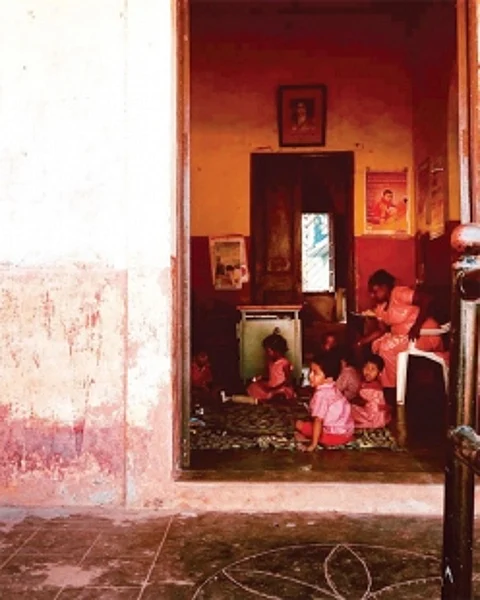

A meme currently floating around the Internet urges people, “If
you can’t go outside, go inside.” It is undoubtedly a time to reflect and
introspect. Artists around the world are going deeper within themselves to find
creative ways to connect with humanity at large. At the end of the day, as we
face this pandemic together, we are all connected through the same emotions
that humanity continues to feel together– loneliness, fear, kindness, love,
sadness.
Sunaparanta- Goa Centre for the Arts has sparked a virtual
conversation with Surviving SQ, inviting artists to share the ways
we can connect and cope and get through this time. SGCA Patron Isheta Salgaokar
and Curator Leandre De Souza explain the idea behind the project, “In this time
when we find ourselves in various degrees of containment and uncertainty, the
present crisis has pushed us to think about our lives, our relationships, what
we will leave behind and if we get through this, what will be our new way to
exist with one another and in nature. It has reminded us of the preciousness of
our experiences and to be grateful for the simple and transient pleasures that
life brings.”
With an emphasis on reaching out and encouraging collaboration
and a participatory dialogue, the Centre also wants to continue to engage
actively with the online community. It is true indeed that art can keep us
going “challenging us to see differently, to change our perspective and to find
beauty, meaning and hope in the most unexpected places.”
SGCA has launched four original
campaigns including the works of artists Pallavi Paul, Tanya Goel, Kedar
Dhondhu and Ipshita Maitra.
In her evocatively titled work, Share Your Quiet,
artist Pallavi Paul cherishes the power of silence. She invites people to send
in audio clips of silence from their confined environments. These collective
quiets are streamed weekly as a symphony of silence. Paul reflects on how in
recent days, “noise and light seem to have become an index of public spirit.
For those who have chosen to withdraw, it is important to hold a space for
quietude. In silence things churn, relationships change and ideas are born -
beyond the gaze and instruction of power.” As random people respond and share
their quiet, the sonic experience marvellously amplifies the idea of a fertile
silence.”
|
Kedar Dhondhu turns towards a visual representation of the
isolatory lockdown, presenting a series of pencil drawings in Lonely Residents. The artist invited people to send him an image of themselves along with a note on how they are
passing their time in quarantine. He then transforms these images into pencil
drawings on paper, turning them into an archive of residents surviving this
difficult and challenging quarantine in their homes. He says, “Being an artist, I found the situation tense as
most people face great difficulty in living indoors for such a long
period. This project is a study of people
adjusting and adapting to life indoors. I feel that by giving importance to
‘Lonely Residents’ in the form of art, I hope they will feel good and happy
about it, forgetting about the tense situation. I also hope that people can
use this time to try to reinvent themselves.” Tanya Goel presents hauntingly beautiful images of nature
in The Virus in the air, is abstract. The work consists of
a video series of nature taken by the artist as she spends time in her garden
during her present precautionary imposed quarantine upon her return to India.
For Goel, the videos are a way to give form to a virus that till now remains
abstract. Nature at first hushed, later awakens. Deeply existential, the work
turns into a sublime recording of her curfew. Audiences are invited to dip
into nature and to share their sensations, memories as they contemplate its beauty. The introspective artist writes, in Notes from “Spring
in Curfew, Sounds in Spring, “During my tate-imposed quarantine, I am
biding time, making ‘video stills,’ as the disease is sublime* and art is
just the passing of time. These video stills of nature* chronicle time while
spring and we are together mutating, into something we do not know yet. “These video stills, begin as an ode to Tarkovsky, but slowly,
through the passing of time, and prolonged looking, but also, mostly by
chance, capture, the surrounding sounds; sound of trains, airplanes and
conversations, that document the current state of our lives in a strange,
abstract and inexplicable state of suspension while I am longing for
equilibrium.” (*Sublime, here, refers to a subjective reading of ideas of
the Sublime, as suggested by Kant- Longinus- Costa. *Nature, here, refer to ideas propagated by Hegel, Marx and
Darwin.) Ipshita Maitra uses the medium of photography to deepen her,
and the viewer’s perception of the world during isolation. In her photo essay
series, Metaphor of Contrasts, she invites us to learn about colors present in our everyday
spaces. As we glance over the images, Maitra encourages us to identify
gradually contrasting palettes. The artist feels that being in
lockdown - our windows become portals to the world outside. When we
begin to sharpen our gaze, we too can open our windows and repeat the action
by recording colors that surround us. As we look out, everything changes
as we begin to recognise color and perceive its harmony. Through various media, and in
their own uniquely individual ways, these four artists are creating works
that capture the imagination and create interesting immersive worlds. It is
indeed a good time, and maybe an equally rewarding time, to think of ways that
beat the prohibitive lockdown by unlocking one’s creativity and going deeper
within. |